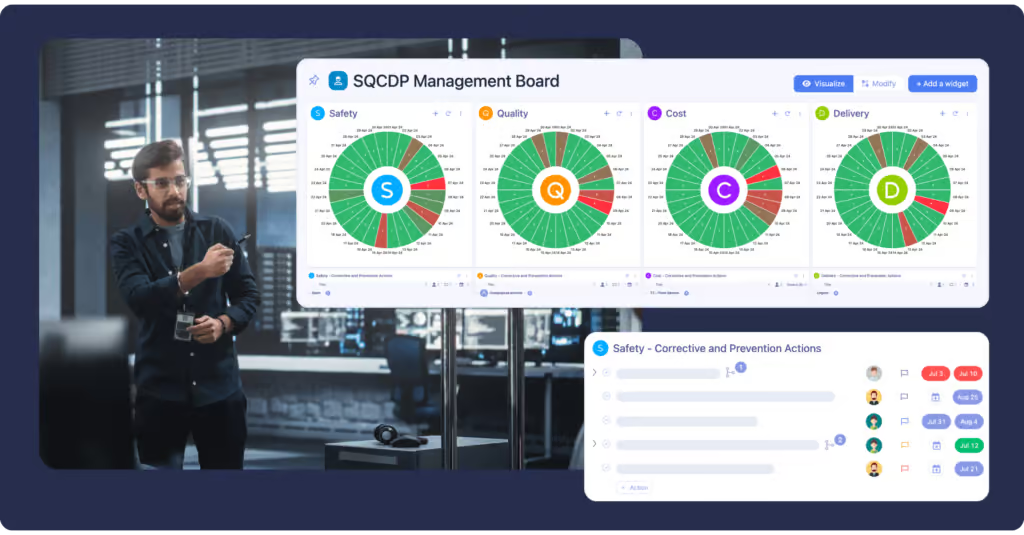
In an age where organizations strive for efficiency and productivity, understanding how to calculate the span of control within your team structure can greatly aid in achieving these goals. The span of control is a key element in designing an effective organizational structure and can significantly impact the communication, decision-making process, and overall performance of your team. This blog will guide you through understanding the concept, its influencing factors, and the steps to calculate the span of control.
Understanding the Concept of Span of Control
'Span of control' is a term used to describe the number of subordinates that a manager or leader can effectively and efficiently oversee. This vital principle plays a crucial role in defining an organization's hierarchy and the distribution of responsibilities. When a manager has a wide span of control, they are responsible for a larger number of employees, creating a flat structure within the organization. On the other hand, a small span of control, where a manager oversees fewer subordinates, leads to a tall organizational structure. Each structure, whether flat or tall, has its benefits and drawbacks, and finding an appropriate balance is key to determining an effective span of control. This balance helps ensure that management can effectively direct their team without spreading themselves too thin or becoming overly restrictive in their supervisory roles. Understanding this concept is the first step in calculating the span of control within your own team, which is a vital process for any manager looking to optimize their team's efficiency and productivity.
Factors Influencing the Span of Control
The extent of the span of control within any team is not determined arbitrarily; rather, it is influenced by a number of specific factors. Here are some factors influencing the span of control of an organization:
The Nature and Complexity of the Tasks
The nature and complexity of the tasks undertaken by the team is one such factor. When tasks are more complex and necessitate a high degree of managerial oversight, a narrow span of control is needed to ensure effective supervision.
Similarly, the degree of homogeneity or similarity in the tasks performed by subordinates also influences the span. When tasks are quite similar, a manager can supervise more employees effectively, leading to a wider span of control.
Geographical Dispersion
The geographical dispersion of team members is another influential factor. If the team members are spread across different locations, the manager's ability to supervise effectively may be reduced, requiring a narrower span of control.
Manager's Competence
In addition to these factors, the manager's competence and experience level also plays a significant role. A more experienced and competent manager can handle a larger team effectively, hence, a wider span of control. Conversely, a less experienced manager may be more effective with a smaller team, implying a narrower span.
Interaction and Monitoring
The amount of interaction required between the manager and the team members also affects the span of control. If the work requires a lot of feedback, instruction, and engagement from the manager, a narrower span of control is more effective.
Support Systems
Finally, the support systems in place for the manager can influence the span of control. This includes assistance from subordinate managers, availability of technology, and administrative support. These factors can enable a manager to supervise a larger team effectively, hence increasing the span of control.
Steps to Calculate the Span of Control
To determine the span of control within your organization, start by identifying how many subordinates a manager directly oversees. This can be determined through a hierarchical organization chart or by reviewing employee reporting lines.
After pinpointing this initial count, consider the intricacies of the team's tasks. More complex tasks may warrant a narrower span of control to provide the necessary level of oversight. Additionally, assess the skill level and competence of your team members. If your team is highly proficient and experienced, a manager might effectively handle a larger team, thus widening the span of control.
Consider the level of interaction necessary between the manager and their team members. Jobs that require regular feedback and instruction from the manager may suggest a narrower span of control for efficient management.
Lastly, don't neglect the role of support systems available to the manager. Tools like technology, assistance from subordinate managers, and administrative support can enhance a manager's ability to handle a larger team effectively, thus broadening the span of control.
In essence, calculating the span of control isn't merely a numbers game, but a balanced analysis of several factors that contribute to successful team management.
Adjusting Your Team Structure Based on Span of Control
Once you've calculated the span of control within your organization, you can use that insight to make strategic adjustments to your team structure. For instance, if your evaluation reveals that a manager is supervising too many subordinates, it might be an indication that you need to bring in additional management resources. By adding another manager or supervisor, you can effectively divide the responsibilities, thereby creating a balanced span of control.
On the other hand, discovering a narrow span of control could signal that a manager is overseeing a smaller number of subordinates. This could lead to micromanagement, which can be counterproductive and demoralizing for your team. In such situations, consider consolidating roles or flattening your organization's hierarchy. This can free up managerial resources to focus on more strategic tasks and allow team members more autonomy, boosting their motivation and productivity.
As you implement these adjustments, remember that it's crucial to keep the lines of communication open with your team. Explain why changes are being made and how they can benefit the team as a whole. This will foster a sense of understanding and buy-in among team members, ensuring a smooth transition to the newly adjusted team structure.
Through effective calculation and application of the span of control, you can optimize your team structure, thereby promoting better communication, decision-making, and overall team performance. However, it's essential to remember that as tasks, teams, and technologies evolve, so too should your team's structure. Regularly reassessing the span of control and making necessary adjustments ensures your team remains adaptable and efficient in the face of changing circumstances.
The Role of Technology in Span of Control
As we navigate the digital era, the impact of technology on the span of control becomes increasingly apparent. Implementing the right digital tools can significantly enhance a manager's ability to effectively oversee a larger team, even when spread across diverse geographical regions. This is made possible through various forms of technology designed to streamline communication and project management.
1. Project Management Tools
Project management tools offer managers a unified platform where they can track progress, assign tasks, and interact with their teams, all from one centralized location. This eliminates the constraints of distance and time, providing managers the ability to efficiently supervise remote teams, therefore expanding the span of control.
2. Video Conferencing Technology
Similarly, video conferencing technology enables face-to-face interaction, regardless of geographical location. This fosters a more personal and direct connection between managers and their team, facilitating better communication and more effective supervision.
3. Collaboration Platforms
Additionally, collaboration platforms offer shared workspaces where teams can work together in real-time. These platforms can foster effective teamwork, even among dispersed team members, reducing the need for constant managerial oversight. Consequently, this can enable managers to supervise a larger number of employees effectively, increasing the potential span of control.
However, it's crucial to note that while technology can increase the span of control, it should not replace the human element of management. Personal interactions, feedback, and guidance remain integral components of effective leadership. Therefore, the use of technology should be seen as an enabler, providing the manager with the tools to better manage their team, rather than a replacement of their role.
Final Thoughts
On a final note, understanding and calculating the span of control is crucial for organizational efficiency. Factors like task complexity, geography, and manager competence influence this concept. Adjusting team structures based on calculated spans enhances performance. Technology aids in expanding control but should complement, not replace, human elements in leadership. Regular reassessment ensures adaptability in evolving environments.


